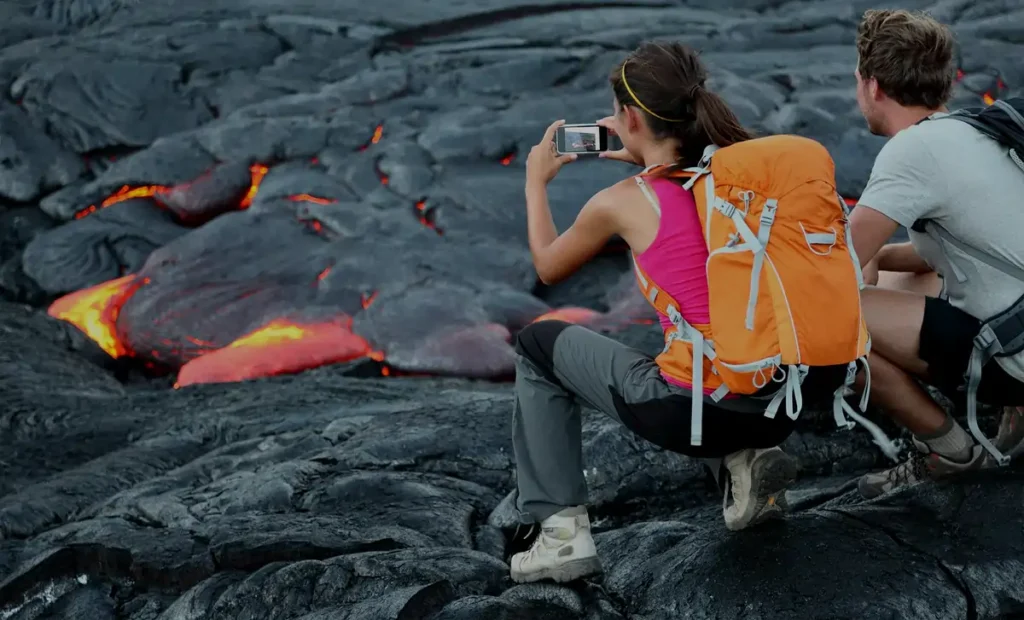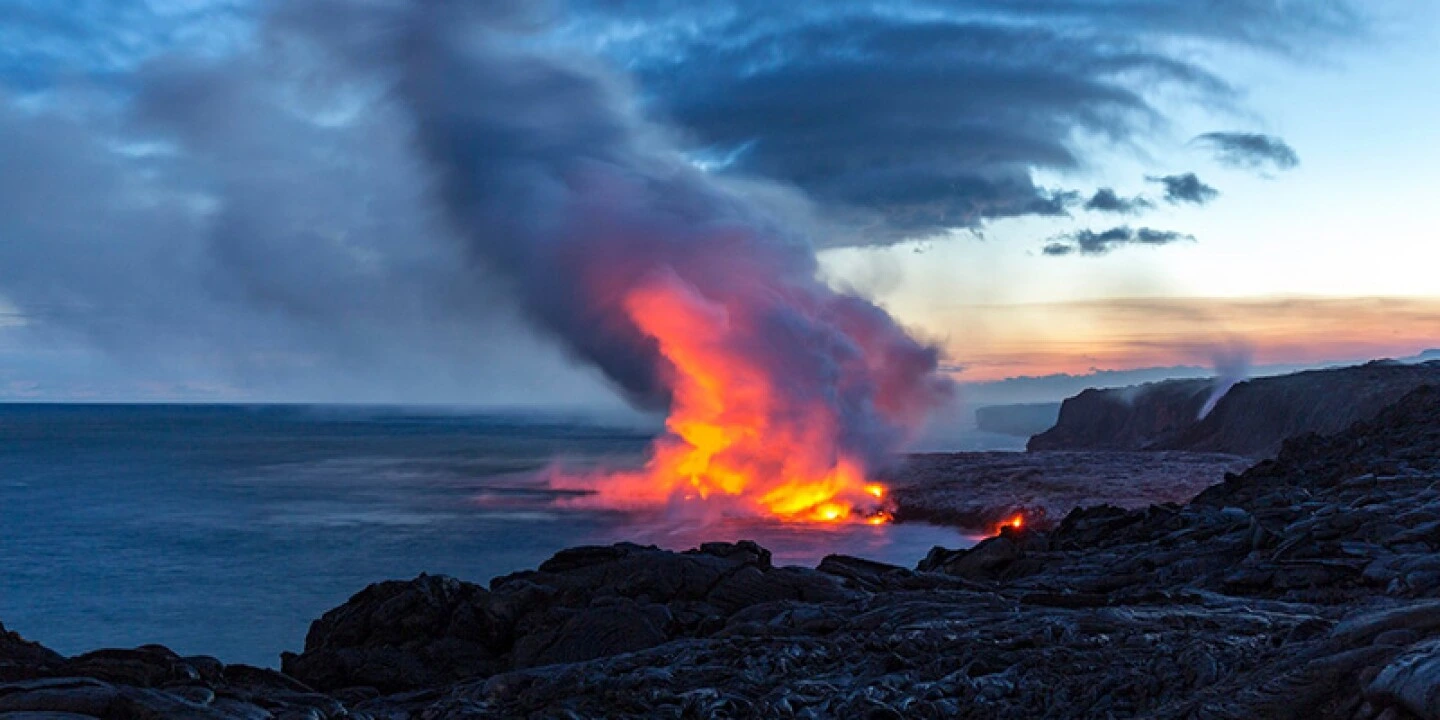Introduction:
Hawaii Volcanoes National Park stands as a mesmerizing testament to the Earth’s raw power and beauty. At the heart of this volcanic wonderland lie two active giants, Kilauea and Mauna Loa, both regularly putting on breathtaking displays of molten lava. While there’s no absolute guarantee of witnessing this fiery spectacle during your visit, careful planning can significantly enhance your chances.
Where to Witness the Lava Dance:
For an unparalleled lava-viewing experience, direct your gaze towards the Halema’uma’u crater. Perched at the summit of Kilauea volcano, this pit crater has been a cauldron of activity since September 2021, featuring a mesmerizing lava lake that captivates onlookers.
Other hotspots in the park where lava might reveal its fiery glow include:
- Steaming Bluff: Offering a stunning vantage point of Halema’uma’u crater and its lava lake.
- Chain of Craters Road: Meandering through a landscape scarred by past lava flows, this scenic road offers a unique perspective.
- Thurston Lava Tube: A natural wonder created by flowing lava, this hollow tube is a captivating testament to the volcanic forces at play.
Hawaii Volcanoes National Park: Timing is Everything
Lava, with its molten brilliance, truly comes alive in the dark, creating a stark contrast against the night sky. Nighttime offers the most dramatic views, but even during daylight hours, especially on cloudy days, the spectacle can be awe-inspiring.
The prime time to visit Hawaii Volcanoes National Park for a lava display is during an active eruption. However, even during dormant periods, the park boasts a plethora of captivating sights and activities.
Safety First for an Unforgettable Experience:

Lava viewing demands respect and caution. Ensure a safe and memorable experience with these essential tips:
- Stay informed: Always check the latest lava flow activity report before heading to the park.
- Dress appropriately: Wear sturdy shoes and long pants to protect against hot ash and lava fragments.
- Maintain a safe distance: Be vigilant of your surroundings and keep a safe distance from the lava flow.
- Follow instructions: If viewing from a designated area, adhere to the guidance provided by park rangers.
Conclusion:
Hawaii Volcanoes National Park is a treasure trove of volcanic wonders, with lava viewing at its forefront. Whether witnessing the fiery glow from the Halema’uma’u crater or exploring the remnants of past eruptions along Chain of Craters Road, the park promises an unforgettable experience. By prioritizing safety, staying informed, and embracing the awe-inspiring power of nature, visitors can embark on a journey into the heart of Earth’s elemental forces at this iconic national park.
Stay tuned for more exciting stories and subscribe to the USA Mirror newsletter to stay updated.
Thank you so much for reading. We appreciate you valuable time.
Frequently Asked Question (FAQ)
What time of year is best to see lava in Hawaii Volcanoes National Park?
The best time of year to see lava in Hawaii Volcanoes National Park is during an active eruption. However, even when the volcanoes are not erupting, there is still a chance to see lava flowing within Halema'uma'u crater.
What is the best time of day to see lava in Hawaii Volcanoes National Park?
Lava is most visible at night, when the contrast between the molten lava and the dark sky is most dramatic. However, lava can also be seen during the day, especially on cloudy days.
What is the closest I can get to the lava?
For safety reasons, visitors are not allowed to get too close to the lava. The closest you can get to the lava will depend on the specific location and the current lava flow activity.
Do I need a guide to see lava?
It is not necessary to have a guide to see lava in Hawaii Volcanoes National Park. However, if you are not familiar with the park, it may be helpful to take a guided tour. Guided tours can provide you with valuable information about the park and the lava flows.
What are some other things I can do in Hawaii Volcanoes National Park besides see lava?
Hawaii Volcanoes National Park is a beautiful and diverse park with a lot to offer visitors. In addition to lava viewing, you can also hike, camp, bike, and learn about the park's unique geology and ecology.




